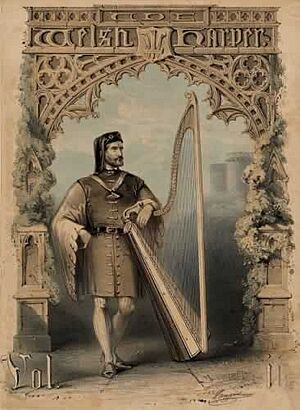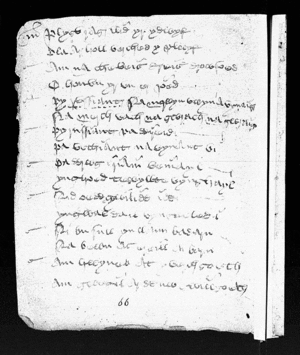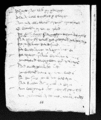The Girls of Llanbadarn facts for kids
The Girls of Llanbadarn, also known as The Ladies of Llanbadarn, is a funny and short poem. Its Welsh name is Merched Llanbadarn. A famous Welsh poet from the 1300s, Dafydd ap Gwilym, wrote it. In the poem, he makes fun of himself for not having much luck with the girls in his area. Dafydd ap Gwilym is thought to be the best Welsh poet ever. This poem is one of his most famous works. We don't know the exact year it was written, but it was probably around the 1340s.
Contents
What Is the Poem About?
In this poem, Dafydd ap Gwilym complains about the women in his town. He says he has never been lucky with any of them. He wonders why none of them want to meet him in the woods. He compares himself to a legendary lover named Garwy. Dafydd says he has always been in love with someone, but he never wins their heart.
He even admits that every Sunday, he goes to church. But instead of focusing on the service, he turns his head. He looks over his shoulder at a girl. He imagines the girls talking about him. They make fun of how he looks and acts. Dafydd ends the poem by saying he should give up. He thinks he should go live alone like a hermit. Even though he stares a lot, he still doesn't have a girlfriend.
What Does the Poem Mean?
The main idea of the poem is Dafydd's constant bad luck in love. This is a common theme in many of his poems. A writer and expert named Gwyn Jones once wrote about Dafydd. He said Dafydd often missed his chance with women. Things like husbands, alarms, old women, and bad weather always got in his way. But Dafydd was always a great tryer, even in church!
You can find similar funny stories about poets' bad luck in love. Writers like Geoffrey Chaucer and the Roman poet Ovid also wrote about this. But Dafydd is also making a serious point. He suggests that the girls are only judging him by his looks. He implies that his true worth is much deeper than what they see.
How Is the Poem Written?
"The Girls of Llanbadarn" is a type of Welsh poem called a cywydd. These poems follow very strict rules. It uses a special system of alliteration and rhymes called cynghanedd. Alliteration means words close together start with the same sound. Internal rhyme means words within the same line rhyme.
However, the lines where the two girls talk are different. In those parts, the language is simple and sounds like everyday conversation. This is a contrast to the rest of the poem. The poem also uses something called Sangiad. This means breaking up the normal order of a sentence.
An expert named Joseph Clancy showed how this works. He translated the last lines of the poem. The second half of each line breaks the story. It adds the poet's thoughts:
- From too much looking, strange lesson,
- Backwards, sight of weakness,
- It happened to me, strong song's friend,
- To bow my head without one companion.
How Did the Poem Influence Others?
In the 1900s, a Welsh poet named Raymond Garlick wrote a poem. It was called "Llanbadarn Etc." This poem was inspired by "The Girls of Llanbadarn." It was written for someone who acted like Dafydd in the poem. But this modern person did not have the words to write a cywydd about it.
Images for kids





